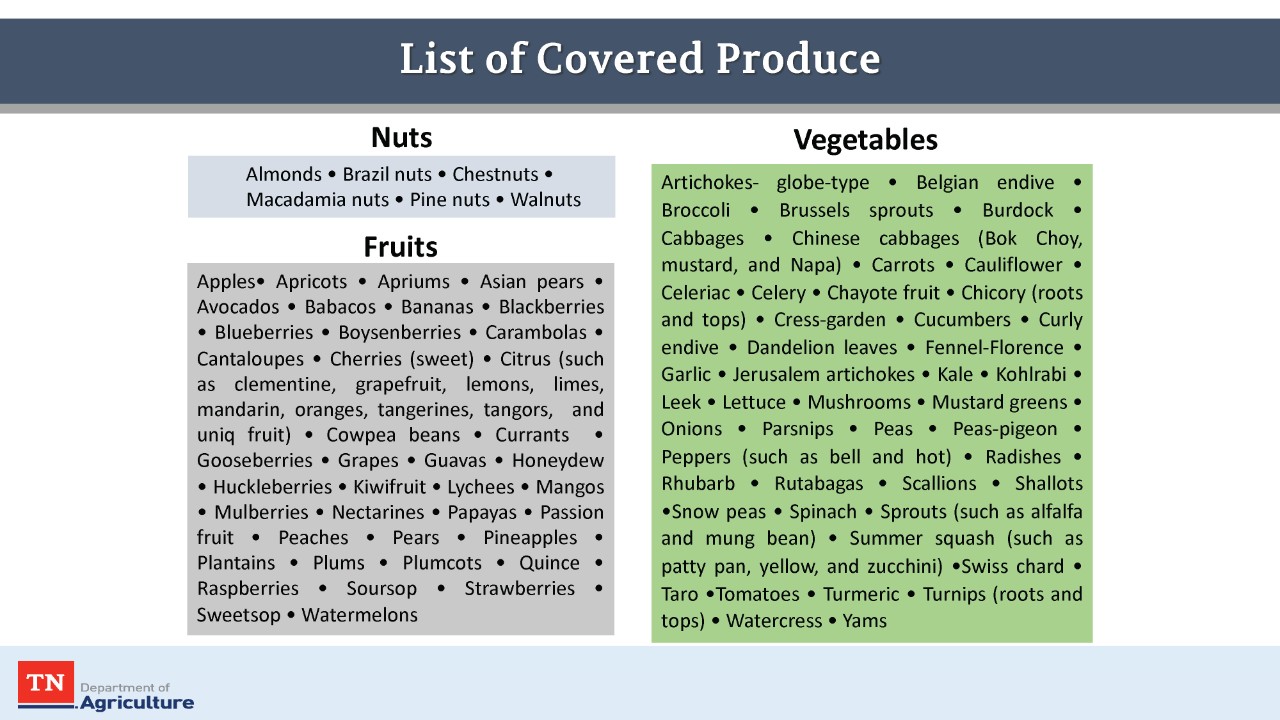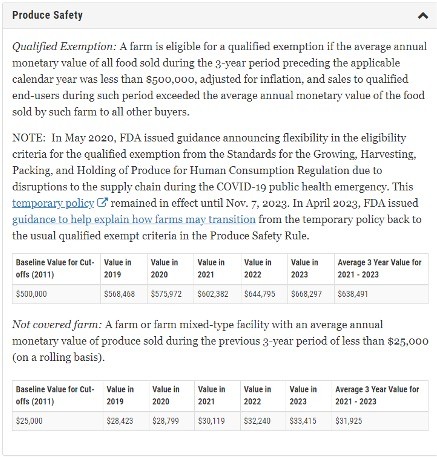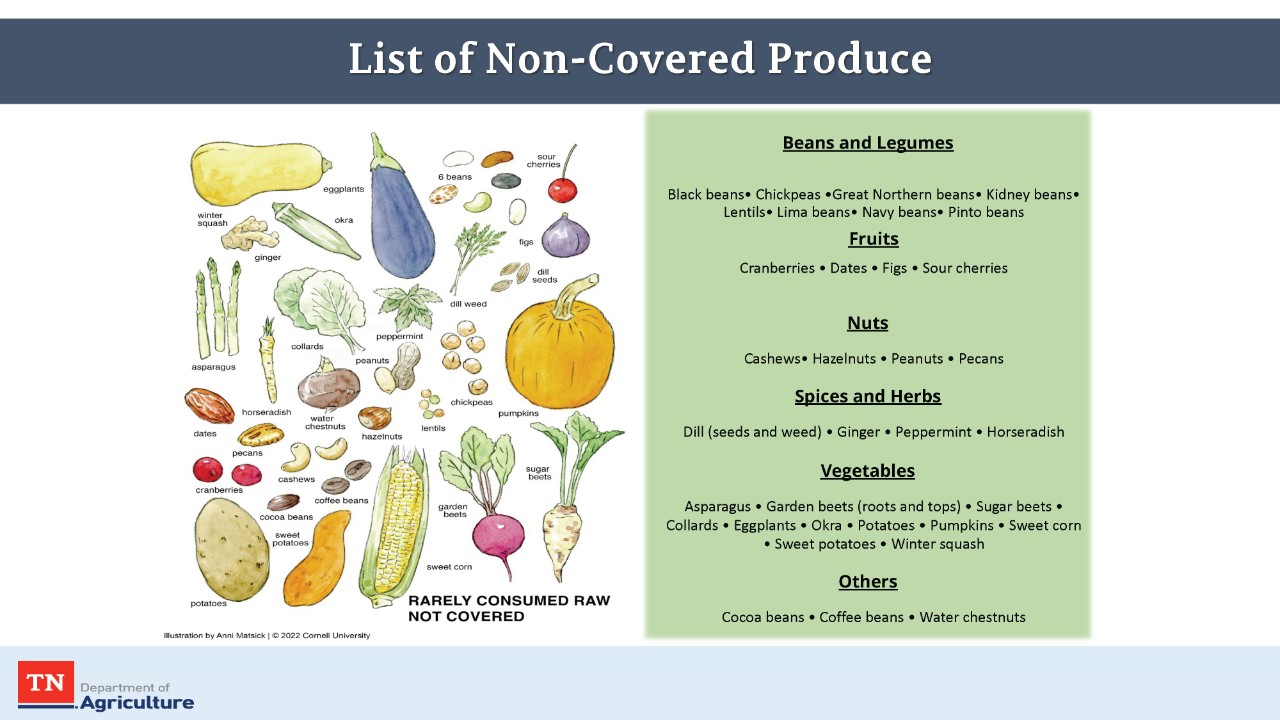FAQ's & Resources
While Good Agricultural Practices (GAP) certification and the Produce Safety Rule have many similarities, the systems are not the same and are managed by different agencies. GAP certification, while it may be required by a buyer, is a voluntary system. The Produce Safety Rule is part of a federal law that applies to all farms that meet the coverage requirements of the Rule. Those businesses that choose to be GAP certified and are also subject to the Produce Safety Rule may be interested in Harmonized GAP. USDA worked with industry to develop the new audit, which better meets the needs of some growers who are subject to multiple reviews.
In most cases, farm inspections are scheduled and there is a pre-inspection call so you know when your inspection will be conducted and who will be coming on to your farm to conduct the inspection. The pre-inspection call confirms the commodities grown and farm activities occurring, inspector’s information, biosecurity practices, farm’s policies, and ensures that the owner or produce safety manager will be present at the inspection. Under certain circumstances a farm inspection may be unannounced, typically due to previous produce safety issues on the farm that require follow-up, or complaints, recalls, or foodborne outbreaks associated with the farm.
You do not need a permit to grow, harvest, hold and pack produce in Tennessee. You will need to coordinate with other department or local/county government for other permits related to selling and/or manufacturing produce.
Covered activities are growing, harvesting, packing, or holding covered produce on a farm.
Under the Produce Safety Rule, covered produce is defined as fruits and vegetables that are typically consumed raw. Produce not covered by the Produce Safety Rule has been identified by the United States Food and Drug Administration (FDA) as a commodity that is rarely consumed raw and instead undergoes a “kill step” (cooking) prior to consumption.
Below are examples of covered produce:

All FSMA-PSR Produce Safety Inspections are free.
Implicit Price Deflators for Gross Domestic Product (GDP)
- Several FSMA rules have provisions in which a value is adjusted for inflation and averaged over 3 years. We provide the values based on Price Deflators for Gross Domestic Product (GDP) and the average for the most recent 3 years for the applicable rules below. The GDP deflator is not a static number, and changes monthly. We intend to update the values at the beginning of April each year.
- NOTE: As of 2024, the U.S. Bureau of Economic Analysis (BEA) uses 2017=100 for estimating the GDP deflator instead of 2012=100. We have updated all the values in the tables on this page to reflect the changes to the GDP deflator. BEA current standard practice is to update the base for GDP deflator every 5 years; FDA will update in unison and provide that update here.

Links to various resources:
State of TN grant page
PSA Labeled Sanitizers for Produce
